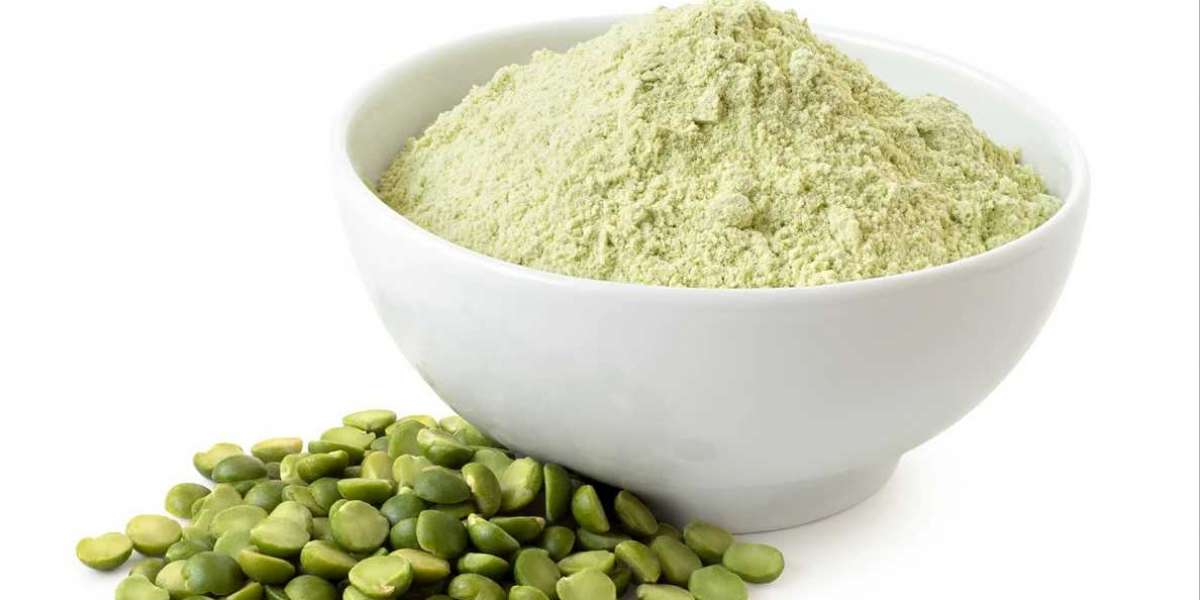According to the current analysis of Reports and Data, the global Pea Starch Market was valued at USD 98.7 Million in 2019 and is expected to reach USD 181.2 Million by the year 2027, at a CAGR of 8.1%. It is one of the novels starch-based ingredients in the food and feed industries. It provides many nutritional benefits over its counterparts and is helpful in preparing gluten, lactose, and other allergen-free solutions. It also aids in providing clean labels for baked goods and other processed food products due to its organic origins. Fish, meat products, and extruded foods are among the major applications of these ingredients. These cumulative applications are expected to drive the market for this ingredient over the period of forecast.
Native pea starch, a rich source of amylose, is derived from the seedpod of the pod fruit Pisum sativum. This starch is neutral in taste and contains about 40% starch content. This ingredient has a non-GMO origin and can be used to formulate food products that can claim non-allergenic and gluten free labels. With the increasing demands for clean-label processed food products, the demand for these ingredients is getting a boost.
Newer ingredients such as pea starch have novel application with regards to their functional properties. It aids in providing increased viscosity to food products, efficient binding texture, and a good film building where it is applied. Baked snack products and specific meat applications employ these starchy ingredients for various preparation processes.
Further key findings from the report suggest-
- Gelling is one of the most prominent functions of pea starch whose application are varied and are expected to increase in the forecast years. This is because of the reason that this ingredient is a rich source of amylose and it helps in forming aqueous gels, soups, sauces, and other products. The gelling properties of this product also helps in keeping the nutrient content of various foods intact.
- By grade, food is the largest application segment as it offers gelling, thickening, binding, and texturing properties that have several applications in food items.
- This product is used most widely in the preparation of snacks and savory food products. Native pea starch acts as a fat replacement in convenience foods, baked snacks, and nutritional food extrudates. It is also an important source of fiber in these consumables.
- The usage of these ingredients is increasing in pet foods and other animal feed products. It is also used as calf milk replacer and provides the right mix of protein and fiber necessary for the growth of pet and farm animals.
- The paper and textiles markets are among the growing applications. The starch is used for textile sizing especially in cotton yarns. Its chemical properties are also similar to those of cotton.
- Modified pea starch also finds application in the pharmaceutical industry for their applications such as paste clarity, solubility, and thaw stability. The native counterparts aid in binding and disintegration purposes in the pharmaceutical product market.
- The Asia Pacific region is a growing market and is expected to register the highest CAGR during the period of forecast. Factors such as a increasing demand for native starches, high volume of noodle consumption, increasing usage of pea starches in processed food preparation, and a huge consumer base are expected to be the major factors contributing to the impressive market growth.
- Emsland Group, Roquette Freres, Vestkorn Milling, Axiom Foods, Yantai Oriental Protein Tech Co., The Scoular Company, American Key Food Products, Cosucra Groupe Warcoing SA, Parrheim Foods, and Puris Foods are among the manufacturers of these ingredients globally.
Get a Discount on the Report: https://www.reportsanddata.com/discount-enquiry-form/1958
For the purpose of this study, Reports and Data have segmented the market on the basis of grade, function, application and region:
Grade (Revenue, USD Million; 2016–2027)
- Food
- Feed
- Industrial
Function (Revenue, USD Million; 2016–2027)
- Binding and Thickening
- Gelling
- Texturizing
- Film Foaming
- Others
Application (Revenue, USD Million; 2016–2027)
- Food and Beverages
- Snacks Savories
- Soups Sauces
- Meat Poultry Products
- Confectionery Products
- Bakery Products
- Dairy Products
- Industrial Purposes
- Pharmaceuticals
- Paper and Textiles
- Cosmetics
- Mining Bioplastics
- Pet Food
- Feed
- Swine
- Ruminants
- Poultry
- Others
Regional Outlook (Revenue in USD Million; 2016–2027)
- North America
- Europe
- Asia Pacific
- Middle East and Africa
- Latin America
Read the Latest Press Release: https://www.reportsanddata.com/press-release/global-pea-starch-market
Key questions answered by the report
- At what rate will the Global Pea Starch Market grow? What will be the value of the market in 2027?
- What are the key technologies driving the Global Pea Starch Market?
- What would be the impact of Global Pea Starch across different regions?
- What are the strategies adopted by players to enter the APAC region?
- What is the key application of Global Pea Starch in the different sectors?
- What are future growth strategies in the market?
Contact Us:
John W
Head of Business Development
Direct Line: +1-212-710-1370
E-mail: sales@reportsanddata.com
Reports and Data | Web: www.reportsanddata.com
News: www.reportsanddata.com/market-news


